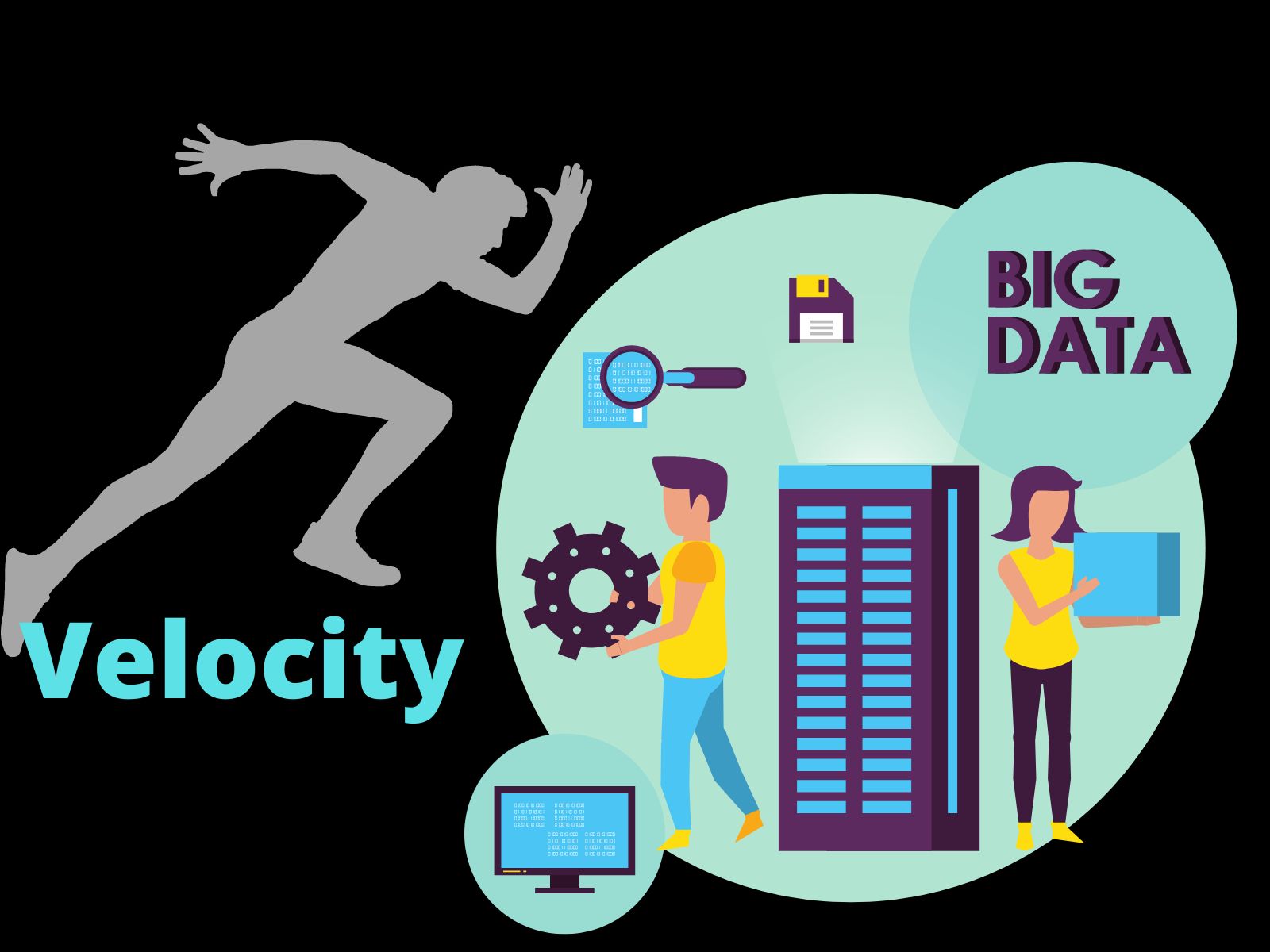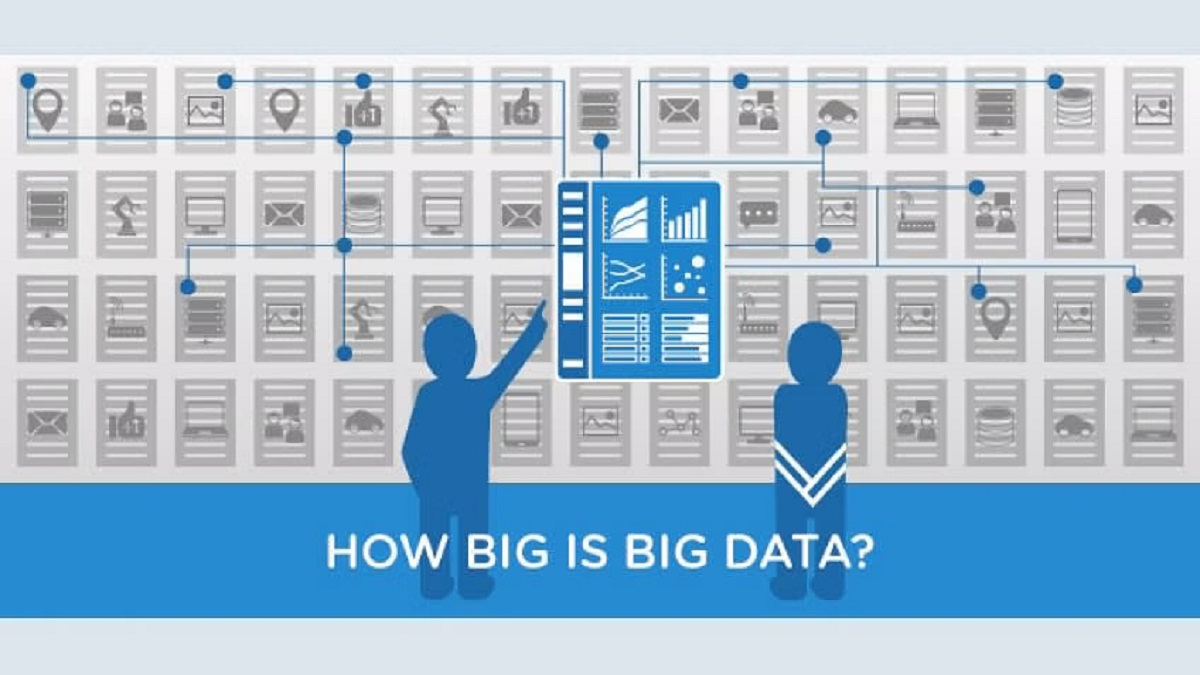Introduction
In today’s digital age, the volume of data generated and processed is staggering. As organizations strive to extract actionable insights from this overwhelming influx of information, traditional batch processing methods may not suffice. This is where stream processing comes into play.
Stream processing, also known as real-time data processing, is a technique that allows for the continuous processing and analysis of data as it is generated, providing businesses with immediate insights and enabling them to take proactive actions. Unlike batch processing, which handles data in discrete sets at specified intervals, stream processing handles data in real-time, ensuring the rapid processing of information to support real-time decision-making.
The growth of the Internet of Things (IoT), social media, and online services has fueled the demand for stream processing. Websites, social media platforms, financial institutions, energy sectors, and e-commerce companies are just a few examples of industries that benefit from stream processing. By processing data in real-time, these organizations can gain a competitive edge by identifying patterns, detecting anomalies, and responding to events as they happen.
Stream processing operates on data streams, which are unbounded, infinite sequences of data records. These streams typically consist of continuous data updates, events, or messages from various sources, such as sensors, applications, or databases. Stream processing systems handle these streams and apply computations, transformations, and analytics to derive insights and produce meaningful results in real-time.
One of the key characteristics of stream processing is its ability to handle data in motion. Traditional batch processing methods often require data to be stored in a central location before processing can begin. In contrast, stream processing enables data to be processed while it is still in transit, significantly reducing processing latency and enabling faster decision-making.
In the following sections, we will explore the characteristics, benefits, use cases, challenges, and popular stream processing frameworks. We will also delve into the application of stream processing in real-time analytics and highlight its role in Apache Kafka, a widely adopted data streaming platform. So, let’s dive in and explore the fascinating world of stream processing!
What is Stream Processing?
Stream processing is a data processing technique that involves continuously processing and analyzing data as it is generated in real-time. It is designed to handle data in motion, providing organizations with immediate insights and enabling them to take proactive actions.
At its core, stream processing involves the ingestion, transformation, and analysis of data streams. These streams may consist of constantly updating data records, events, or messages from various sources, such as sensors, applications, or databases. Stream processing systems process these streams in real-time, applying computations, transformations, and analytics to derive insights and produce meaningful results.
Stream processing differs from traditional batch processing, where data is processed in discrete sets at specified intervals. Batch processing often requires data to be stored in a central location before processing can begin. In contrast, stream processing operates on data in motion, processing it as it is being transmitted.
One of the key advantages of stream processing is its ability to handle high-velocity data. With the growth of IoT devices, social media platforms, and online services, data is being generated at an unprecedented rate. Stream processing allows organizations to process this streaming data in real-time, enabling them to respond quickly to events, detect anomalies, and identify patterns.
Stream processing also supports event-driven architectures, where actions are triggered based on specific events or conditions. This makes it ideal for applications that require real-time responses, such as fraud detection, anomaly detection, and predictive maintenance.
Stream processing systems often provide built-in features for handling data parallelism, fault tolerance, and scalability. These systems are designed to handle the high volume, velocity, and variety of streaming data. They can be deployed on-premises or in the cloud, depending on the organization’s requirements.
Overall, stream processing is a powerful technique that enables organizations to harness the value of real-time data. By processing data in motion, organizations can make faster, more informed decisions, detect issues promptly, and seize opportunities as they arise.
Characteristics of Stream Processing
Stream processing possesses several key characteristics that make it a powerful and valuable tool for analyzing and acting upon real-time data. Let’s explore some of these characteristics:
- Real-Time Processing: Stream processing operates on data in real-time, allowing for immediate analysis and insights as data is being generated. This real-time processing enables organizations to make proactive decisions and take timely actions.
- Data in Motion: Unlike batch processing, which processes data in discrete sets, stream processing handles data in motion. It allows for the continuous processing of data as it is being transmitted, reducing processing latency and enabling faster responses to events.
- High-Volume and High-Velocity Data: Stream processing is designed to handle large volumes of data generated at high velocity. With the exponential growth of data from various sources such as IoT devices, social media platforms, and clickstreams, stream processing can efficiently process and analyze this data in real-time.
- Event-Driven Processing: Stream processing is event-driven, meaning it can immediately respond to specific events or triggers. Organizations can define rules or conditions to trigger actions based on events, enabling real-time responses for activities like fraud detection, alerting, and automated decision-making.
- Parallel Processing: Stream processing systems generally offer built-in mechanisms for parallel processing. This allows for the distribution of processing tasks across multiple computing resources, enabling scalability and efficiently handling high data loads.
- Integration with Streaming Platforms: Stream processing can seamlessly integrate with various streaming platforms, such as Apache Kafka and Apache Flink, which provide robust infrastructures for handling and managing streaming data. This integration enhances the capabilities and scalability of stream processing applications.
These characteristics make stream processing an invaluable tool for real-time data analysis, enabling organizations to make data-driven decisions in the face of rapidly changing data streams. By leveraging real-time processing, organizations gain a competitive edge, improve operational efficiency, and drive innovation in various industries.
Benefits of Stream Processing
Stream processing offers a wide range of benefits for organizations that need to process and analyze real-time data. Let’s explore some of the key advantages of stream processing:
- Real-Time Insights: Stream processing enables organizations to gain immediate insights from the ever-increasing influx of data. By processing data in real-time, organizations can identify patterns, detect anomalies, and respond promptly to events as they happen.
- Proactive Decision-Making: With real-time analysis of data streams, organizations can make proactive decisions based on up-to-date information. This allows them to respond quickly to changing market conditions, customer preferences, and emerging trends.
- Operational Efficiency: Stream processing reduces processing latency by handling data in motion. By eliminating the need to store data before processing, organizations can achieve faster and more efficient data processing, saving time and resources.
- Improved Customer Experience: Stream processing enables organizations to deliver personalized and relevant experiences to their customers in real-time. By analyzing data streams as they occur, organizations can tailor their offerings, recommendations, and marketing campaigns to individual customer preferences and behaviors.
- Fraud Detection and Risk Mitigation: Stream processing is invaluable for detecting fraud and mitigating risks in real-time. By continuously analyzing data streams, organizations can identify suspicious activities, trigger alerts, and take immediate action to prevent fraudulent transactions or security breaches.
- IoT and Sensor Data Processing: With the proliferation of IoT devices and sensors, stream processing is essential for handling the high volume and velocity of data generated by these sources. Stream processing enables organizations to unlock the value of IoT and sensor data, extracting insights and driving innovation.
- Scalability and Flexibility: Stream processing systems are designed for scalability, allowing organizations to handle growing data volumes and accommodate changing business needs. They offer flexible deployment options, including on-premises and cloud-based solutions, to meet the unique requirements of each organization.
- Real-Time Action and Automation: Stream processing facilitates real-time action and automation by triggering events, alerts, or actions based on specific conditions or events. This enables organizations to automate decision-making processes, reducing manual effort and ensuring timely responses.
These benefits demonstrate the value of stream processing in today’s fast-paced and data-driven world. By leveraging stream processing techniques, organizations can unlock the potential of real-time data, gain a competitive advantage, and drive innovation across various industries.
Use Cases of Stream Processing
Stream processing has numerous applications across various industries, enabling organizations to harness the power of real-time data. Let’s explore some common use cases where stream processing proves invaluable:
- Real-Time Analytics: Stream processing is widely used for real-time analytics, allowing organizations to gain immediate insights and make data-driven decisions. It enables the continuous analysis of data streams, facilitating the detection of trends, anomalies, and patterns as they occur.
- Financial Services: Stream processing is crucial in the financial services industry for fraud detection, risk management, and real-time trading. By processing high-velocity data streams, organizations can spot fraudulent activities, mitigate risks, and make informed trading decisions in real-time.
- Internet of Things (IoT): The IoT generates vast amounts of streaming data from various devices and sensors. Stream processing enables organizations to analyze this data in real-time, enabling predictive maintenance, remote monitoring, energy management, and more.
- E-commerce and Retail: Stream processing is utilized by e-commerce and retail companies to enhance customer experiences and optimize operations. It enables real-time personalized recommendations, inventory management, supply chain optimization, and fraud detection.
- Social Media and Digital Advertising: Stream processing is crucial in social media platforms and digital advertising to analyze user behavior, deliver targeted advertisements, detect trending topics, and monitor social media sentiment in real-time.
- Log and Event Monitoring: Stream processing is employed for log and event monitoring to detect anomalies, track system performance, and trigger alerts in real-time. It helps organizations identify and respond to issues swiftly, ensuring the smooth running of critical systems.
- Transportation and Logistics: Stream processing is utilized in transportation and logistics for real-time fleet management, route optimization, supply chain visibility, and monitoring of delivery statuses. It enables organizations to make data-driven decisions to improve efficiency and customer satisfaction.
- Healthcare: In the healthcare industry, stream processing is used for real-time patient monitoring, early warning systems, predictive analytics, and personalized medicine. It allows healthcare providers to deliver timely and precise care based on real-time patient data.
These use cases highlight the versatility and significance of stream processing in diverse industries. By leveraging stream processing techniques, organizations can unlock the value of real-time data, improve operational efficiency, enhance customer experiences, and drive innovation in their respective domains.
Challenges of Stream Processing
While stream processing offers numerous benefits, it also presents some challenges that organizations need to overcome. Let’s explore some common challenges associated with stream processing:
- Data Volume and Velocity: Stream processing deals with high volumes of data generated at high velocities. Managing and processing this data in real-time can be challenging, requiring robust infrastructure and scalable systems.
- Data Quality and Integrity: Ensuring the accuracy and integrity of streaming data is crucial. Real-time data may contain errors, missing values, or inconsistencies. Organizations need to implement mechanisms to cleanse and validate data as it is processed.
- Processing Latency: Stream processing aims to deliver real-time insights, but excessive processing latency can hinder timely decision-making. Organizations need to optimize their processing pipelines to minimize latency and ensure rapid data analysis.
- Complex Event Processing: Handling complex event processing, which involves detecting patterns and correlations across multiple data streams, can be challenging. Organizations must define effective rules and algorithms to identify meaningful events and trigger appropriate actions.
- Resource Management: Stream processing requires efficient resource management to handle the high processing demands. This includes effectively allocating computing resources, optimizing memory usage, and managing network bandwidth for smooth data flow.
- Fault Tolerance: Stream processing systems must be resilient to failures to ensure continuous operation and prevent data loss. Implementing fault-tolerant mechanisms, such as data replication, automated failover, and checkpointing, is crucial for maintaining system reliability.
- Integration Challenges: Integrating stream processing systems with existing infrastructure and legacy systems can be complex. Organizations need to ensure seamless data flow between different components and maintain compatibility with existing data formats and protocols.
- Scalability: Scalability is critical in stream processing to handle growing data volumes and accommodate increasing processing demands. Organizations must design and implement scalable architectures that can adapt to changing data requirements and handle peak loads.
Addressing these challenges requires careful planning, robust architecture, and the use of appropriate technologies and tools. Overcoming these hurdles allows organizations to effectively leverage stream processing and reap the rewards of real-time data analysis and decision-making.
Stream Processing Frameworks
Stream processing frameworks provide the necessary tools and infrastructure to handle and process streaming data effectively. These frameworks offer a wide range of capabilities and features to enable real-time data processing. Let’s explore some popular stream processing frameworks:
- Apache Kafka Streams: Apache Kafka Streams is a popular and widely adopted stream processing framework. It integrates seamlessly with Apache Kafka, a distributed streaming platform, and provides an intuitive high-level DSL (Domain-Specific Language) for building stream processing applications. Kafka Streams offers fault-tolerance, scalability, and state management capabilities, making it suitable for a variety of use cases.
- Apache Flink: Apache Flink is a powerful and versatile stream processing framework that supports both stream and batch processing. It offers advanced event-time processing, stateful computations, fault-tolerance, and exactly-once processing semantics. Flink’s rich set of APIs and libraries provide flexibility and enable complex stream processing scenarios.
- Apache Samza: Apache Samza is a distributed stream processing framework that focuses on fault-tolerance and scalability. It leverages Apache Kafka for messaging and Apache Hadoop YARN for resource management. Samza provides high-throughput, low-latency stream processing capabilities, making it suitable for real-time data applications.
- Storm: Apache Storm is an open-source distributed real-time computation system. It enables the processing of high-velocity data streams with low processing latency. Storm provides fault-tolerance and scalability through its distributed processing architecture, making it suitable for continuous and real-time data processing.
- Spark Streaming: Apache Spark Streaming is an extension of the popular Apache Spark framework. It provides real-time stream processing capabilities by dividing data streams into small batches and processing them using the underlying Spark engine. Spark Streaming offers fault-tolerance, high throughput, and integration with other Spark components.
These stream processing frameworks offer a wide range of features and capabilities to handle the complexities of real-time data processing. Depending on the specific use case and requirements, organizations can choose the framework that best suits their needs and integrates well with their existing infrastructure.
Real-time Analytics with Stream Processing
Real-time analytics is a critical use case for stream processing, enabling organizations to extract valuable insights from streaming data as it is generated. By processing and analyzing data in real-time, organizations can make informed decisions, identify trends and anomalies, and respond swiftly to changing conditions. Let’s delve into the world of real-time analytics with stream processing:
Stream processing provides the foundation for real-time analytics by continuously ingesting, processing, and analyzing data streams. It enables organizations to derive insights and take action in the moment, rather than relying on batch processing methods that introduce delays in data analysis.
With stream processing, organizations can perform a wide range of analytics tasks. These include:
- Real-time Monitoring: Stream processing allows organizations to monitor streaming data for key metrics, thresholds, or anomalies. It provides mechanisms for setting up alerts and triggering actions based on specific conditions or events in the data stream. This helps organizations proactively manage their operations and respond to critical issues in real-time.
- Pattern Detection and Trend Analysis: Stream processing enables organizations to identify patterns and trends in real-time data streams. By analyzing the stream continuously, organizations can identify emerging trends, detect abnormal patterns, and gain insights into customer behavior, market dynamics, or system performance.
- Machine Learning and Predictive Analytics: Stream processing can be integrated with machine learning algorithms to perform real-time predictive analytics. It allows organizations to build models, train them on the fly using streaming data, and make predictions or classifications in real-time. This enables proactive decision-making and automation of business processes.
- Complex Event Processing: Stream processing systems support complex event processing, where multiple events from different sources are evaluated in real-time to detect meaningful patterns or correlations. This enables organizations to identify and respond to critical business events promptly.
- Temporal Analytics: Stream processing systems provide mechanisms to perform temporal analytics, which involve analyzing data within a specific time window or interval. Temporal analytics allows organizations to examine data trends over time, calculate aggregates, and derive meaningful insights from time-series data.
Real-time analytics with stream processing empowers organizations to make data-driven decisions, detect anomalies, and capitalize on opportunities as they arise. By leveraging the power of real-time data analysis, organizations can gain a competitive edge, improve operational efficiency, and enhance customer experiences.
Stream Processing in Apache Kafka
Apache Kafka, a distributed streaming platform, plays a fundamental role in stream processing applications. With its reliable, scalable, and fault-tolerant architecture, Kafka provides a robust foundation for processing and managing real-time data streams. Let’s explore stream processing in Apache Kafka:
Kafka integrates seamlessly with stream processing frameworks, allowing organizations to process data as it flows through Kafka topics. This integration enables the ingestion of streaming data from various sources and the application of complex computations, transformations, and analytics in real-time.
Kafka provides the following key components for stream processing:
- Kafka Producers: Producers push data records as events into Kafka topics. Stream processing applications can act as producers to feed real-time data streams into Kafka and initiate the processing pipeline.
- Kafka Topics: Kafka organizes data records into topics, which are partitions of data streams. Topics provide the logical organization and partitioning of data, allowing for parallel processing and scalability.
- Kafka Consumers: Consumers retrieve data records from Kafka topics. Stream processing applications can act as consumers, continuously consuming and processing data from Kafka topics as it arrives.
- Kafka Connect: Kafka Connect is a framework that enables the integration of external systems or data sources with Kafka. This allows stream processing applications to seamlessly connect to external systems and leverage their data in real-time processing.
- Kafka Streams: Kafka Streams is a built-in stream processing library provided by Kafka. It enables developers to write stream processing applications directly in Java or Scala, using the high-level DSL or the more low-level Processor API. Kafka Streams simplifies the development, deployment, and scaling of stream processing applications within the Kafka ecosystem.
Stream processing applications built on Kafka can benefit from its fault-tolerant and scalable architecture. Kafka’s use of distributed log storage and replication ensures data durability and high availability, even in the face of failures. This makes it well-suited for mission-critical stream processing applications in various industries.
Organizations leverage stream processing in Kafka for various use cases. These include real-time analytics, event-driven systems, fraud detection, IoT data processing, real-time monitoring, and more. Kafka’s ability to handle high data volumes, its fault-tolerant design, and its integration with stream processing frameworks make it an ideal choice for enabling real-time data processing and analysis.
By combining the power of Apache Kafka’s streaming platform with stream processing capabilities, organizations can unlock the full potential of real-time data, gain insights, and take proactive actions in today’s fast-paced digital landscape.
Conclusion
Stream processing has emerged as a vital technique for organizations seeking to harness the power of real-time data. It enables the continuous processing and analysis of data streams, providing immediate insights and facilitating proactive decision-making. By handling data in motion and processing it as it is generated, stream processing empowers organizations to respond swiftly to events, detect anomalies, and identify patterns.
In this article, we explored the concept of stream processing and its various characteristics, including real-time processing, data in motion, and event-driven processing. We discussed the benefits of stream processing, such as real-time insights, proactive decision-making, and improved operational efficiency.
We also examined the use cases of stream processing across industries, including real-time analytics, financial services, IoT, e-commerce, and more. Additionally, we delved into the challenges associated with stream processing, such as data velocity, data quality, and resource management.
Furthermore, we explored popular stream processing frameworks like Apache Kafka Streams, Apache Flink, Apache Samza, Storm, and Spark Streaming. We also highlighted the importance of stream processing within the Apache Kafka ecosystem and its integration with Kafka producers, topics, consumers, and Kafka Streams.
In conclusion, stream processing is a powerful tool that enables organizations to unlock the potential of real-time data. By leveraging stream processing techniques and frameworks, organizations can make faster, data-driven decisions, gain a competitive edge, and drive innovation across various industries. As the volume and velocity of data continue to grow, stream processing will play an increasingly significant role in helping organizations capture and leverage the value of real-time data.

























